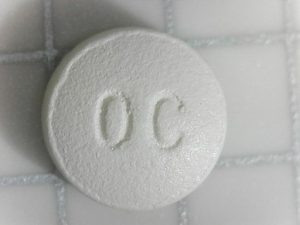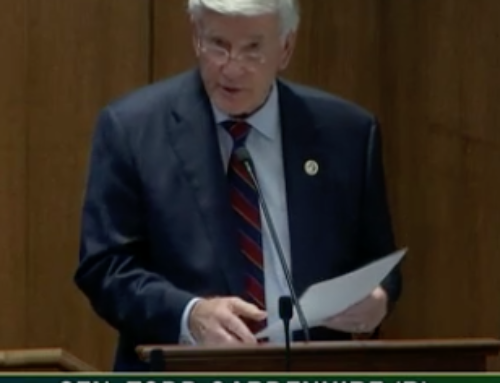State’s lawsuit against Purdue Pharma – unsealed
Detailed data in the state’s opioid lawsuit illustrate how Purdue Pharma continued to push its most profitable drug OxyContin to high-volume providers in Tennessee despite evidence that those providers were misusing or allowing misuse of the drug, according to the state’s unsealed court filing.
In one instance, Purdue called on two providers 48 times after being flagged by law enforcement; in another case, Purdue made sales calls 31 times to a provider whose license was on probation because of issues related to his high prescribing of controlled substances.
The lawsuit references a wealth of evidence collected by the state to back its allegations that Purdue violated the state consumer protection laws and a 2007 court order in the marketing and sales of its most profitable drug, OxyContin.
Purdue had briefly attempted to keep parts of the lawsuit sealed, saying it contained trade secrets, but this week dropped its efforts. Tennessee Coalition for Open Government had intervened in the case to oppose Purdue’s efforts to keep parts of the case secret. The state also argued to keep the case open to the public. Read more about that here.
Below are some excerpts from the now unsealed lawsuit. Many of the numbers — such as the number and frequency of sales visits and the number of prescriptions — are things Purdue had wanted to remain under seal. Purdue also had wanted sealed the notes that documented conversations sales representatives had with prescribers, and internal reports about potential abuse and diversion of the drug. Those sales call notes and reports from are used extensively in the lawsuit to illustrate the state’s claims of how OxyContin broke the state’s consumer protection law, as well as violated the 2007 court order.
Read the lawsuit here. It’s 274 pages.
Here’s one excerpt near the top:
4. …Purdue failed to take appropriate action in spite of knowing about unambiguous, credible signs of abuse or diversion. Instead, Purdue continued to direct its sales force to target the highest prescribers, many of whom had no or limited background on training in pain management.
5. For example, Purdue called on two providers 48 times after it had been told directly by law enforcement officials that the pair was responsible for significant interstate diversion of OxyContin and called on another provider 31 times after the provider’s license was placed on restrictive probation because of issues related to his high prescribing of controlled substances.
Purdue continued to make sales calls in spite of credible reports of patient overdoses, indictments, adverse licensure actions, a provider admitting he was addicted to heroin, a knife fight outside a provider’s office, muggings over controlled substances outside of a pharmacy linked to a specific provider, a clinic that had no examination tables or equipment, an admission by a provider that he was running a pill mill, a provider changing the name of his practice shortly after he was notified of a state investigation into his practice, a patient being coached in the waiting room about how to fill out intake forms, armed guards in provider waiting rooms, high numbers of patients who purchased OxyContin in cash, high numbers of out-of-state or out-of-country tags in providers’ parking lots, accusations of insurance fraud, choreographed urine screenings and pill counts, standing-room-only waiting rooms, and additional signs of problematic high volume practices.
Here’s another – note the dosage recommendations that exceed the CDC’s warnings.
20. Purdue’s sales model relied substantially on both continued users and high-dose opioids. For OxyContin, over 80% of Purdue’s business consistently came from continued users. Out of the 104,340,382 total OxyContin tablets prescribed in Tennessee from 2008 to 2017, 53.7% of them were 40mg or higher. If 40 mg OxyContin is taken twice a day as directed, that amount equals 120 morphine milligram equivalents (MMEs) per day, which exceeds the 90 MMEs daily amount of opioids the CDC warns against by over 33%.
Several parts of the lawsuit outline allegations of aggressive marketing. “We sell hope in a bottle” was its tagline and Purdue encouraged its representatives to “always be closing.”
27. Among other things, Purdue expressly trained its Tennessee sales representatives to “expand the physician’s definition of ‘appropriate patient,’ ” “[d]evelop a specific plan for systematically moving physicians to move to the next level of prescribing behavior,” and “never give someone more info than they need to act.”
The state contends that Purdue focused on providers without pain management expertise and were less likely to have time to appropriately monitor patients on opioids.
28. ..Purdue trained its sales representatives about how to overcome a provider’s objections, such as a provider expressing concern about the abuse of opioids or a provider stating he or she does not treat chronic pain — pushing these providers to write more Purdue prescriptions
29. Many of Purdue’s Tennessee sales representatives devoted half of their sales calls in a given scheduling period to visit primary care physicians, family doctors, nurse practitioners, or physician assistants. Purdue knew or should have known that these prescribers frequently had limited resources or time to scrutinize the company’s claims or conduct the necessary research about the efficacy and risks of high doses of extended release opioids themselves. The below chart illustrates that Purdue’s sales representatives focused at least 183,764 of at least 295,517 sales visits or 62% of sales visits to Tennessee providers to primary care physicians, internists, family doctors, nurse practitioners, and physician assistants over the last 10 years.
30. Purdue targeted nurse practitioners and physician assistants specifically to increase prescribing of its opioid products. In a 2015-2016 OxyContin Brand Strategy training session, Purdue instructed that “NP/PAs [are] critical to our success; contributing to both volume and growth.”
The state says that Purdue’s strategy to focus on nurse practitioners and physician assistants worked. According to information gained by the state, between January 2007 and August 2017, nurse practitioners and physician assistants prescribed 65% of all OxyContin tablets in Tennessee.
The state also alleges that Purdue compensated its sales force in ways that resulted in misrepresentation of its opioid products and marketing to those not experienced in prescribing them, with the misrepresentations passed along from “deceived prescribers to patients.” For example:
34. Many of Purdue sales representatives’ bonuses were based entirely on the number of prescriptions generated. Further, Purdue expressly told its sales representatives to focus on physicians who would give the best return on investment and high potential prescribers. Purdue subjected its sales representatives whose numbers lagged to disciplinary actions which included further sales training and strict managerial oversight, while disciplinary actions for noncompliant sales calls were rarer.
No slowing down on sales even as the devastating effects of the opioid epidemic became known.
51. … Purdue’s Tennessee sales representatives engaged in approximtely 300,000 sales calls to Tennessee health care providers between May 7, 2007 and December 2017 — meaning that Purdue’s sales representatives averaged well over 100 sales calls to Tennessee providers per day to promote its opioid products… The number of sales calls by Purdue sales representatives in Tennessee steadily increased from 11,322 in 2007 to a high of 52,782 in 2016…”
Despite dosage ceilings based on adverse reactions to the drug, Purdue continued to tell providers there was no dose ceiling to the drug. The lawsuit lists several examples from the company’s sales call notes. Here’s one:
65. Likewise, Sales Representative 3 made a sales call to a Lenoir City-area family physician on March 3, 2009, and wrote the following about his interaction:
establishing a pain mgmt office in the area – nurse anes for procedures, he to medical manage – no desire for huge pain practice just trying to fill what they need in community – doesnt see many willing to prescribe – asked me what max dose – discussed no ceiling limit —
The lawsuit outlines how Purdue distributed material that downplayed the problem and signs of addiction by re-labeling it as “pseudoaddiction.”
76. The term pseudoaddiction was coined by Dr. David Haddox, who later became Purdue’s vice president of health policy, and was popularied for opioid treatment by Purdue. It referred to patients who exhibited drug-seeking behavior (as) due to undertreated or undercontrolled pain, as opposed to addiction. Purdue consistently used this concept in sales calls and written educational material to teach providers in Tennessee to actually prescribe more or higher doses of opioids for purportedly “pseudoaddicted” patients, who would then allegedly cease drug-seeking behavior once their pain was controlled.
The pseudoaddiction concept was outlined in the pamphlet Providing Relief, Preventing Abuse, of which the state says 10,281 copies were sent by mail to providers in Tennessee and more than 7,000 delivered in person. The state’s lawsuit includes excerpts from notes of sales calls when the representatives discussed pseudoaddiction with the provider.
An example:
91. On October 21, 2008, Sales Representative 5 called on a Nashville-area family doctor and recorded his interaction as follows:
doc said that going over pain management definitions helps to clarify what issues are, really, going on; ie, physical dependence, addiction, pseudoaddiction. appreciated information.
The state alleges that Purdue overstated the efficacy of tools to mitigate addiction in patients, and alleges such statements were false, deceptive and/or unsubstantiated.
It cites Purdue’s sales training documents, including a piece called “General Objection Handler” to ease concerns about prescribing opioids, as well as several sales call notes.
The lawsuit also references several sales call notes related to the state’s allegation that Purdue failed to disclose the increased risk of addiction of higher doses, which it says was critical to Purdue’s efforts to market opioids for long-term use to treat chronic pain.
Note: This report reflects only a portion of the allegations and details in the lawsuit. You can read and download the entire lawsuit here.





